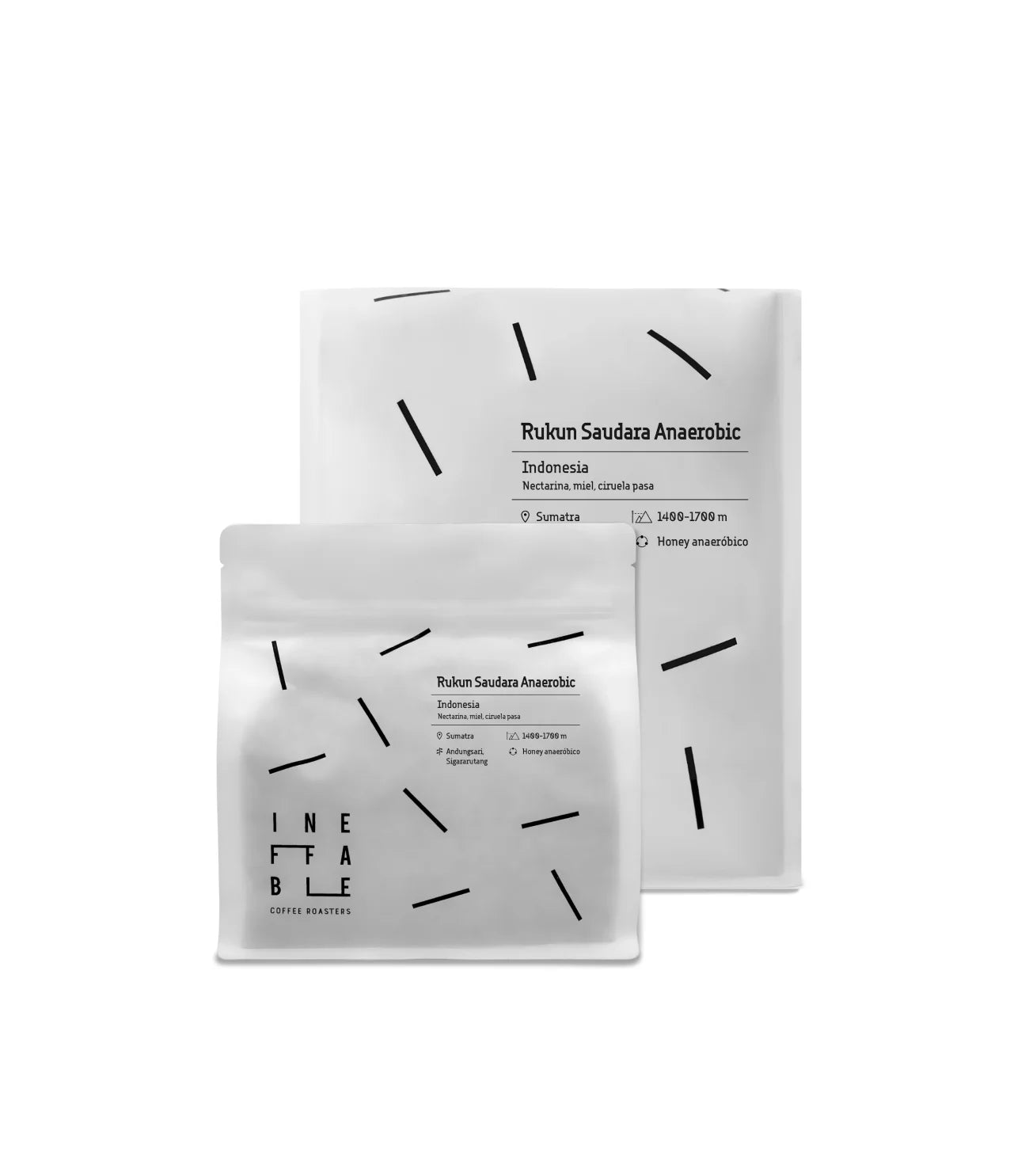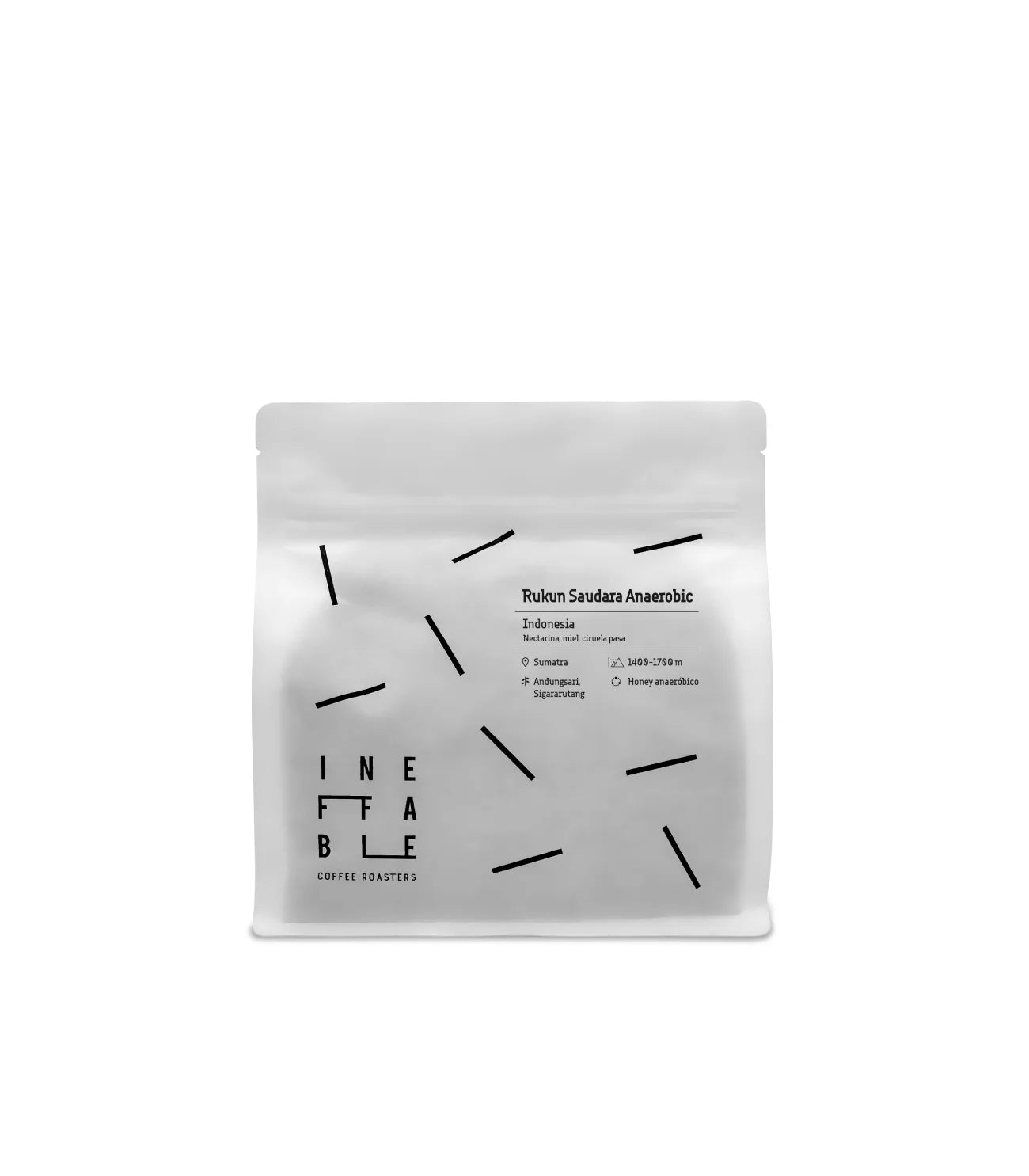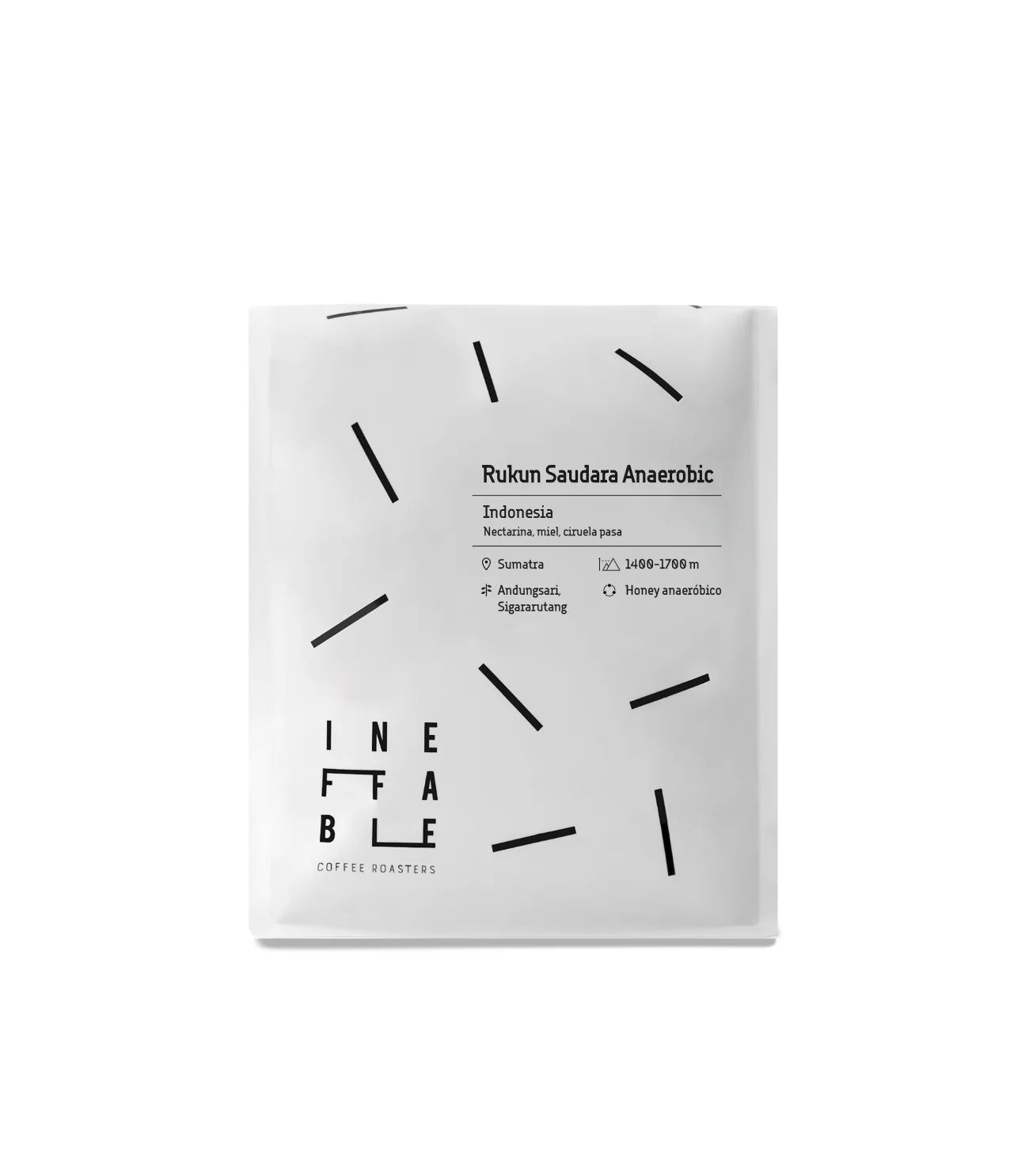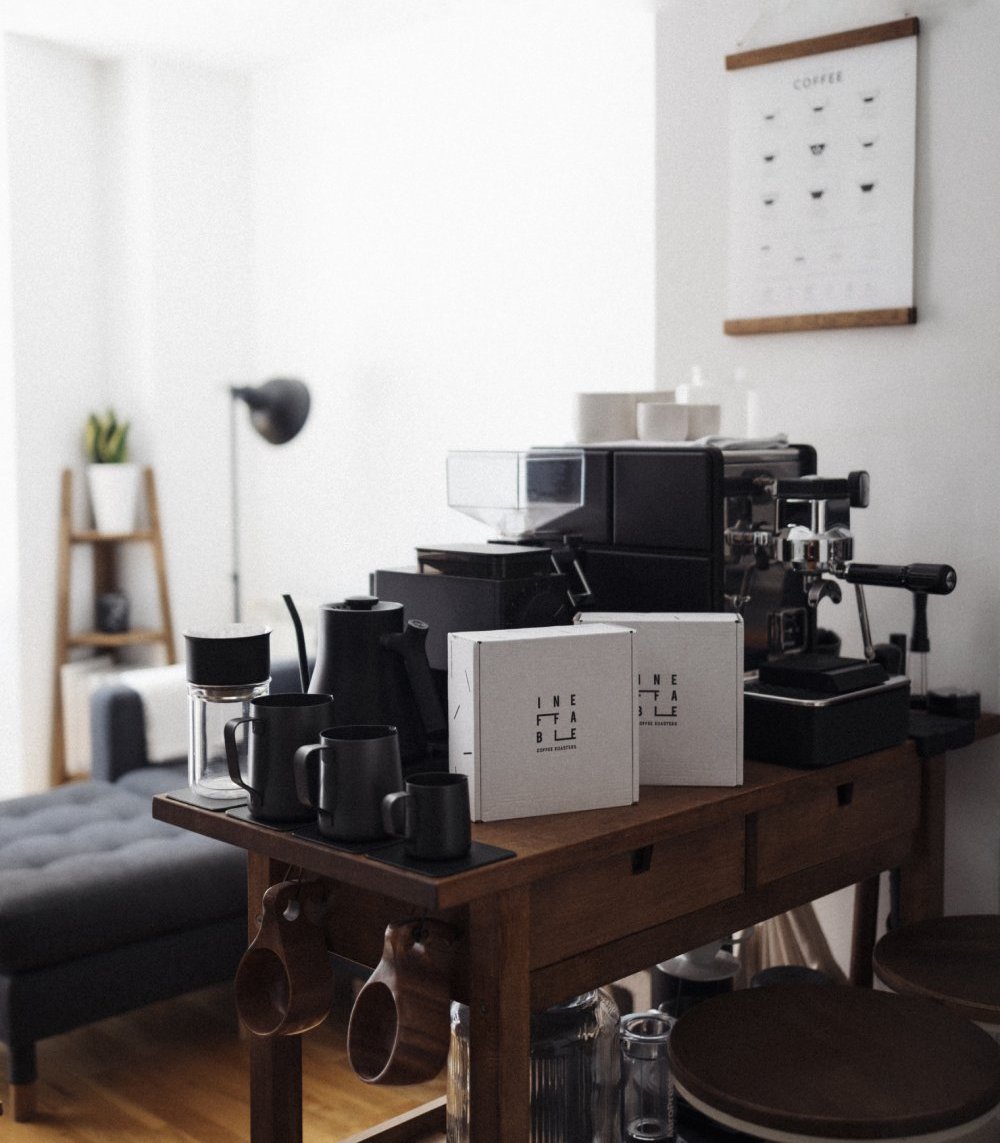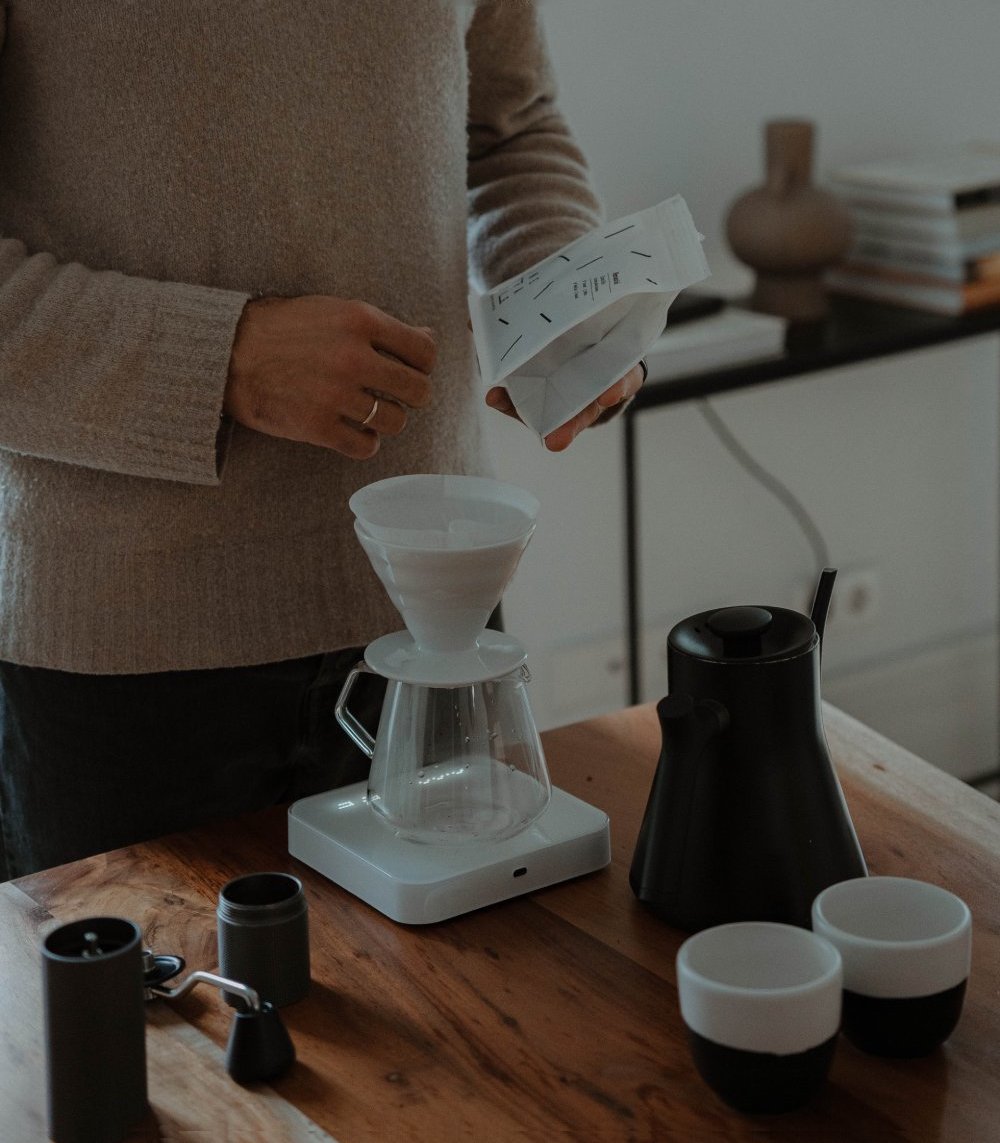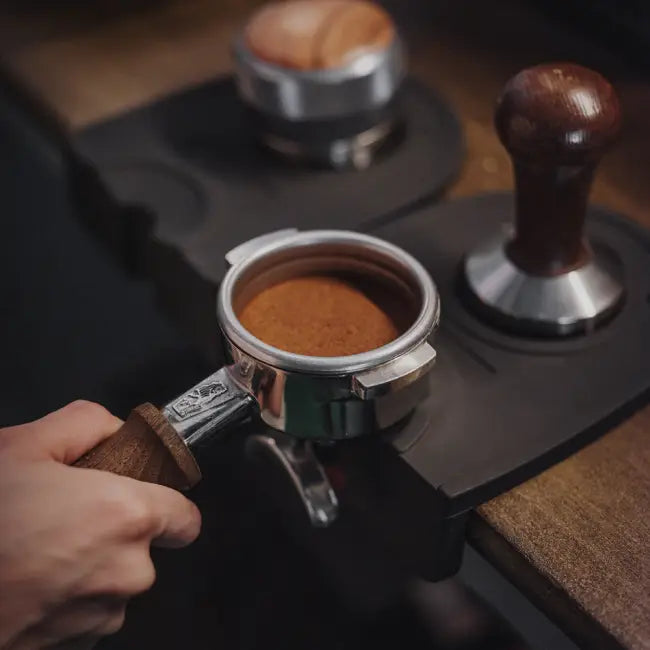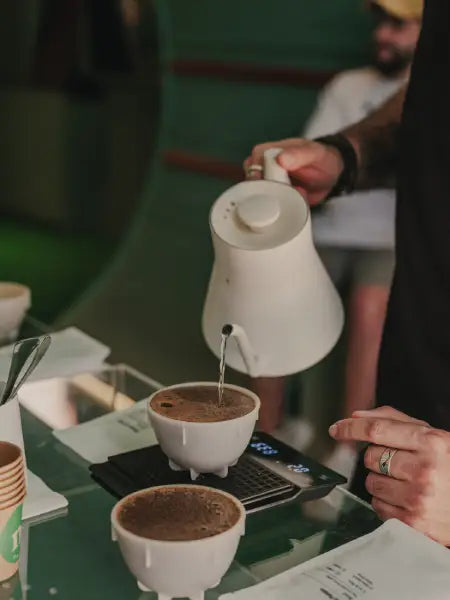Get to know this coffee in detail
Abdul Aziz Thohari leads the Rukun Saudara Cooperative, a project that began in 2017 in the fertile volcanic soil of Sumatra, at the foot of Mount Kerinci.
This unique environment, enriched by centuries of volcanic activity, provides ideal conditions for growing Andungsari and Sigararutang varieties at altitudes between 1,400 and 1,700 metres.
This lot has been processed using the anaerobic honey method, in which the cherries are pulped while keeping the mucilage attached to the bean.
They are then fermented in sealed tanks, creating an oxygen-free environment that enhances fruity flavours through the activity of specific microorganisms.
After a controlled fermentation, the coffee is slowly dried, intensifying its sweetness and complexity.
In the cup, it stands out for its syrupy body, balanced acidity, and vibrant notes of ripe fruit.
Meet the producer
Rukun Saudara Anaerobic: the vibrant taste of Sumatra.
Today, we’re thrilled to introduce one of the most vibrant and complex coffees to pass through our roastery: Rukun Saudara Anaerobic, a coffee from Indonesia that brings together the volcanic richness of Sumatra, the collective efforts of a passionate coffee community, and a carefully controlled fermentation process that enhances its fruity character.

A community united by coffee
At the heart of this story is Abdul Aziz Thohari, founder and head of the Rukun Saudara Cooperative. His journey with coffee began in 2015, when he became increasingly interested in coffee farming and recognised the potential of his region. Back then, coffee was sold as wet parchment and sent off to Medan, the largest city in Sumatra.
The turning point came in 2017, when Thohari and a group of local farmers decided to set up the Rukun Saudara Cooperative. From that moment on, they began processing their own coffee, making the shift from supplying raw material to producing high-quality green coffee. What started with a modest 10 by 5 metre drying station has now evolved into an 800-square-metre facility capable of processing some of the region’s most exciting microlots.
The cooperative is made up of 50 members who live and farm on a plateau at the foot of Mount Kerinci, one of the most iconic volcanoes in the Pacific Ring of Fire. Centuries of volcanic activity have given rise to incredibly fertile soils, ideal for growing varieties such as Andungsari and Sigararutang at altitudes between 1,400 and 1,700 metres. The combined farm area covers around 30 hectares, creating a diverse and productive landscape.

A process that enhances fruit character
This lot has been processed using the anaerobic honey method, a technique that combines precision and creativity. First, the coffee cherries are pulped, leaving part of the sticky mucilage on the beans. Rather than drying them immediately, the beans are placed in sealed tanks with limited oxygen. This anaerobic environment allows specific microorganisms to thrive during fermentation, naturally enhancing the coffee’s fruity notes.
Thanks to close monitoring of fermentation time and conditions, the result is a coffee with great structure, sweetness, and complexity. After fermentation, the beans are slowly dried — typically on raised beds — where the remaining mucilage contributes to the syrupy body and layered mouthfeel.

What does it taste like?
The flavour profile of this Rukun Saudara Anaerobic is both versatile and striking. You’ll find notes of ripe nectarine, floral honey, and a sweet undertone of dried plum. It offers a creamy body, balanced wine-like acidity, and a long, juicy finish.
It’s a coffee that works beautifully as both a filter brew and an espresso, showcasing the full potential of Indonesia as a specialty origin — one that’s capable of producing coffees that are complex, sustainable, and deeply rooted in their local terroir.

Filter Copy for Rukun Saudara Anaerobic
The following recipe is a guide for preparing coffee at home. Results may vary depending on your equipment, settings, and all the variables that influence extraction.
With every coffee we roast, our team tests until they find a recipe that highlights all the coffee's qualities. The one below includes all the information needed to reproduce it. Even so, we always recommend trying and experimenting to discover what you like best: use it as a guide and adapt it to your own taste.
Remember: it's the journey that matters, not the destination.
Please note: Water is the most important factor in achieving a great cup of coffee. Depending on where you live, its composition can vary dramatically. Therefore, we recommend using at least filtered water; another option is a blend of Bezoya and Lanjarón. When adjusting the recipe, change only one variable at a time to identify how it influences the flavor.
It's common to start by adjusting the coffee-to-water ratio. Once you get a cup with a pleasant strength and mouthfeel, you can adjust other aspects of the brewing process.
Most percolation coffee recipes use a ratio between 1:15 and 1:17, with a brewing time of between 2:30 and 4:30 minutes.
Kalita / Origami / Orea
We chose these methods to share our recipes because it's very versatile and easy to adapt to other percolation systems. The flat bottom and wavy pleats of Kalita filters create a large surface area that prevents significant flow blockages caused by fine particle migration or blockages.
Kalita/Origami/Orea
Recipe:
- Ratio: 1:17
- Coffee: 20g
- Water: 340g
- Total time: 3:45 min
- Temperature: 95ºC
- Grinder: EK43 8.5
- TDS 1.39% EY 20.71%
Variables:
- Resting time: Minimum 3 days after roasting, but best expressed after 10-15 days.
- Water: Bezoya 1:2 Lanjaron
- Filter: Sibarist B3
Equipment:
Orea, B3 sibarist filter, Scale, stopwatch, mill, cup/decanter and kettle (gooseneck).
Method:
- Place the Orea in a cup/decanter and insert the filter. Pour hot water over the filter to eliminate the papery taste and preheat the Orea.
- Grind the coffee to the recommended size.
- Throw away the water and place the Orea on the scale, add the coffee, distributing it evenly, tare the scale and start the stopwatch.
- Pour 60g of water in with circular motions and wait 30-40 seconds for the coffee to degas. If the coffee has been recently roasted, give it more time.
- Slowly pour in approximately 200-250g of water and swirl the Kalita once to level the coffee bed and ensure it's completely covered with water. Never fill to the brim; leave at least a 2cm gap from the top to limit water flow through the coffee bed, which can reduce extraction.
- Continue pouring water slowly as before until you have added the necessary amount of water.
- Turn one last time to let the water drain.
- We are looking for a total time according to the recipe, adjust the grind size if necessary next time.
Espresso for Rukun Saudara
Here's our most up-to-date recipe. It's important to remember that this recipe is a reference and that many variables will influence the final result of the espresso in your cup: from the condition of your machine and grinder, the water you use, the storage/steeping time of your coffee, to the temperature/atmospheric pressure, etc. Therefore, you may need to adjust some parameters to achieve a flavorful and balanced espresso based on your specific needs.
For example, here we use six bars of pressure for our machine, if you are set at nine bars we would recommend reducing the extraction time down by around five to ten seconds to compensate.
Recipe:
- Ratio: 1:2.5
- Dry: 18gr
- In cup: 45-46gr
- Time: 26-30s
Variables:
- Resting time: minimum 2 weeks
- Temperature: 94ºC
- Pressure: 6 bars
- Pre-infusion: No
- Water: GH 107 (ppm as CaCO3) KH 30 (ppm as CaCO3)
Machinery and equipment used for this recipe:
- Espresso machine: La Marzocco KB90 2G
- Mill: Mythos 1
- Basket: 22gr VST (without Ridge)
- Extras: Barista Hustle WDT, Push Tamper (flat, 100% level)
Cold brew
Esta es la receta de café cold brew que te proponemos para que elabores 600ml de cold brew. El ratio, en caso de que quieras elaborar más o menos de esta cantidad, es 1:15, 1gr de café por cada 15gr/ml de agua.
Receta y equipamiento:
- Café 40gr. (Usa el café que prefieras dependiendo de tus gustos. Nuestra sugerencia sería elegir perfiles de café que te gusten en elaboraciones de filtro). Si tiene el tag “Cold Brew” es de nuestros favoritos.
- Molienda: Comandante 16 clics.
- Agua 600gr/ml a temperatura ambiente.
- Composición del agua: 2 partes de Lanjarón por 1 de Bezoya.
- Una malla o seda.
- Un recipiente de cristal (preferiblemente con tapa)
- Dejar reposar 22 horas (en el frigorífico).
La forma de hacer el cold brew:
- Molemos el café con una molienda media (Comandante 16 clics).
- Echamos el café directamente en la malla.
- Introducimos la malla en el recipiente de cristal.
- Vertemos el agua en el recipiente a través de la malla con el café.
- Removemos suavemente para saturar todo el café.
- Tapamos el recipiente.
- Lo dejamos reposar en el frigorífico (¡atención a los olores fuertes!).
- Después de este tiempo de reposo, retiramos la malla con el café y estará listo.
- Como paso extra, puedes volver a filtrarlo por un filtro de papel V60, Kalita o similar para obtener un resultado más limpio y cristalino.
- Mantenlo refrigerado.
- Esta receta es para no diluir. Ni siquiera con hielo. En caso de ponerle hielo la composición del agua del hielo afectará al sabor de tu bebida. Mejor hacer tu propio hielo con la misma composición de agua que proponemos. Si usas hielo, quizás quieras bajar el ratio (1:9 a 1:12).
